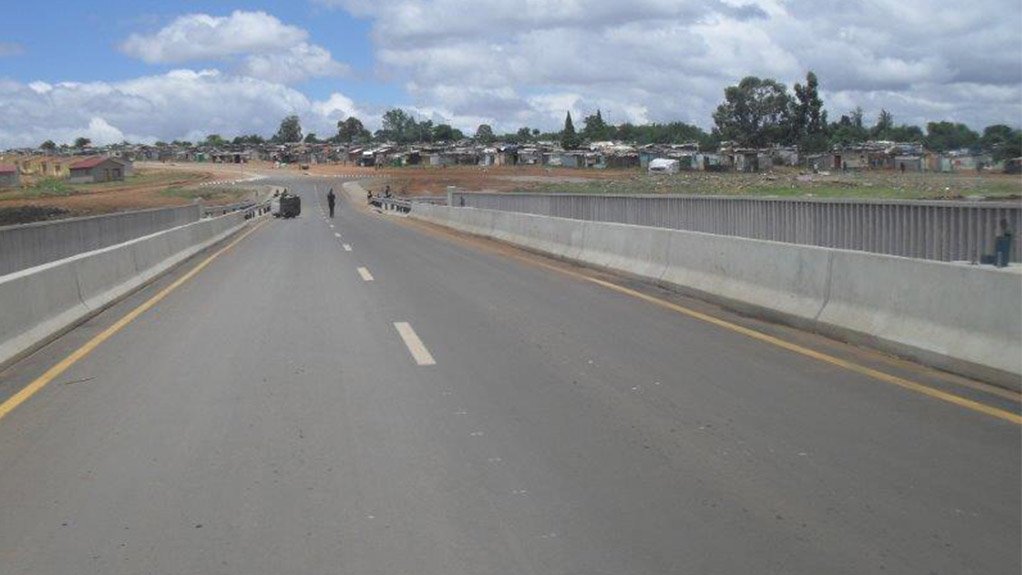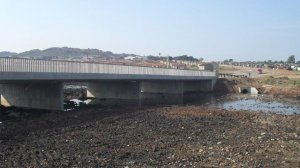Transforming an informal settlement in South Africa into a modern city
This article has been supplied as a media statement and is not written by Creamer Media. It may be available only for a limited time on this website.
Transforming an informal settlement into a fully-fledged urban development requires extensive planning and integration of infrastructure. This was the major problem faced by the City of Johannesburg’s Housing Department when it embarked on a long-term project to develop Elias Motsoaledi.
Named after ANC veteran and Rivonia trialist Elias Motsoaledi, who served 25 years on Robben Island with other struggle icons such as Nelson Mandela and Walter Sisulu, the project is located near Bara Mall in Region D.
The informal settlement has been rocked by violent service-delivery protests, due in part to the fact that unscrupulous landlords rent out shacks to over ten inhabitants, according to Housing Department Assistant Director Bubu Xuba.
The two-phase housing development will ultimately comprise 1 424 low-cost houses, five blocks of medium-density units, and associated amenities such as schools and churches. It was given the go-ahead by the City of Johannesburg in 2010. Construction began in 2011, encompassing the design and construction supervision of roads, stormwater drainage, and a bridge.
The bridge provides an important link between the two areas of the informal settlement, which are separated by a river, designed for a 1:50-year flood event. The project site is located in a valley divided by the river, with the housing being developed in two areas that needed to be linked together. The inter-connectivity of the two separate areas under development was a major consideration.
The City of Johannesburg appointed Hatch in 2013 as civil engineer for the design and construction supervision of about 7 km of internal road and stormwater infrastructure, in addition to the bridge itself.
“An important stipulation was that 30% of the work had to be carried out by the local community,” Xuba stresses. Following an intensive screening process, two local subcontractors and about 20 local residents were employed, tasked with the construction of concrete kerbs, block paving, brick manholes, and general labour. To facilitate this, a dedicated Community Liaison Officer (CLO) was appointed to be the main interface with the local community.
The work allocated to local contractors was always carried out under the supervision of the experienced main contractor for quality control reasons. It was critical to have clear lines of communication between all the professional teams, main contractors and sub-contractors to ensure proper logistics management and coordination.
The bridge itself comprised a five-span, 65-m-long, 13.5-m-wide continuous composite deck, supported on two reinforced concrete abutment walls and four piers on spread footing. The central three spans are 15 m long, while the end spans are 10 m long.
The bridge project location posed a challenge in terms of the presence of a high water table and poor founding material, which affected the foundation design. Six test pits were excavated and suitable material was only reached at about 3.5 m. Samples taken to classify the type of material on-site resulted in the geotechnical and structural engineer recommending a mass concrete foundation, using a high-strength mix.
Apart from the foundation design, the bridge itself had to cater for specific community requirements such as walkways for pedestrian traffic. Future streetlighting requirements also had to be catered for, while service ducts for utilities such as electricity and fiberoptic cables were provided for ease of installation without disturbing the bridge structure itself.
Hatch’s particular achievement on this project, which was handed over successfully in November 2017, apart from the cost-effective and highly-advanced bridge solution implemented, was its successful liaison with the local community, in accordance with the requirements of the Housing Department. “If you do not engage meaningfully with the local community, you cannot expect to gain their support and trust,” Hatch Project Leader Leon Mbongwa.
Comments
Press Office
Announcements
What's On
Subscribe to improve your user experience...
Option 1 (equivalent of R125 a month):
Receive a weekly copy of Creamer Media's Engineering News & Mining Weekly magazine
(print copy for those in South Africa and e-magazine for those outside of South Africa)
Receive daily email newsletters
Access to full search results
Access archive of magazine back copies
Access to Projects in Progress
Access to ONE Research Report of your choice in PDF format
Option 2 (equivalent of R375 a month):
All benefits from Option 1
PLUS
Access to Creamer Media's Research Channel Africa for ALL Research Reports, in PDF format, on various industrial and mining sectors
including Electricity; Water; Energy Transition; Hydrogen; Roads, Rail and Ports; Coal; Gold; Platinum; Battery Metals; etc.
Already a subscriber?
Forgotten your password?
Receive weekly copy of Creamer Media's Engineering News & Mining Weekly magazine (print copy for those in South Africa and e-magazine for those outside of South Africa)
➕
Recieve daily email newsletters
➕
Access to full search results
➕
Access archive of magazine back copies
➕
Access to Projects in Progress
➕
Access to ONE Research Report of your choice in PDF format
RESEARCH CHANNEL AFRICA
R4500 (equivalent of R375 a month)
SUBSCRIBEAll benefits from Option 1
➕
Access to Creamer Media's Research Channel Africa for ALL Research Reports on various industrial and mining sectors, in PDF format, including on:
Electricity
➕
Water
➕
Energy Transition
➕
Hydrogen
➕
Roads, Rail and Ports
➕
Coal
➕
Gold
➕
Platinum
➕
Battery Metals
➕
etc.
Receive all benefits from Option 1 or Option 2 delivered to numerous people at your company
➕
Multiple User names and Passwords for simultaneous log-ins
➕
Intranet integration access to all in your organisation



























